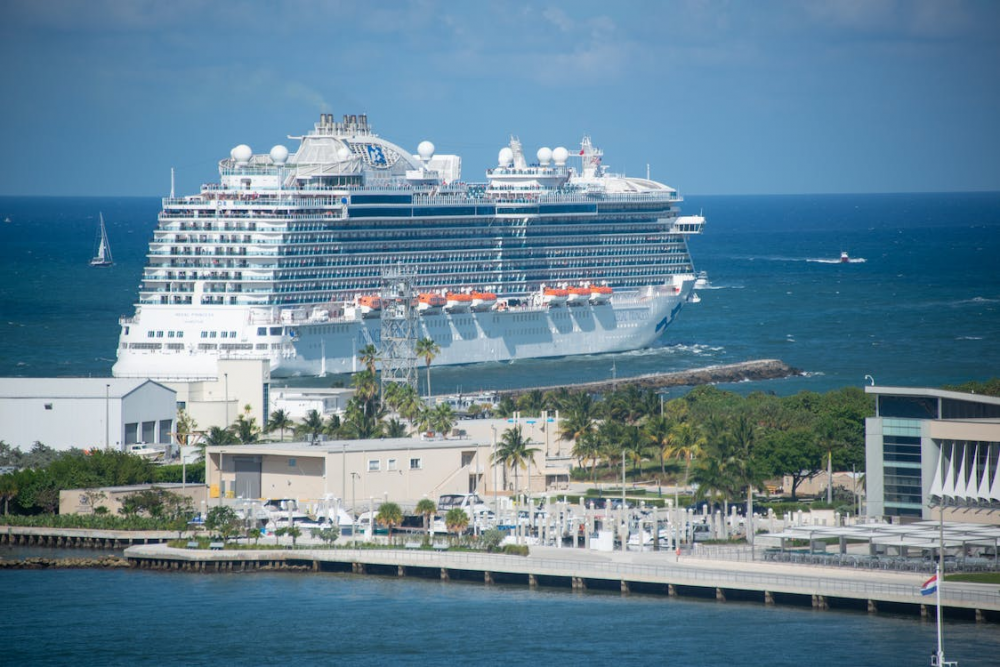In the competitive cruise industry, the transformation of ports from mere embarkation points into commercial spaces is vital. This shift not only reflects the commitment of terminal operators to enhance the travel experience, but also ensures that ports remain useful to their communities even in the off-season. Through this approach, they can easily establish their terminals as exciting destinations for both tourists and locals.
In this article, we discuss the strategies that port operators have employed to facilitate this shift, propelling their terminals into the new age of tourism.
Advantages of Port Terminals Undergoing Transformation
Before we delve into how ports are transforming from utilitarian lots to must-visit stops, let’s explore some of the reasons behind this shift:
Improves the Guest Experience
Numerous cruise ports worldwide have started to focus on non-cruise offers, enhancing the guest experience as a whole. These terminals aim to offer visitors a memorable start to their experience in the city they’re about to explore. By offering a range of retail and entertainment options, port terminals can create a positive first impression, setting the tone for the rest of the trip.
Eases Cruise-Related Congestion
The popularity of cruise travel may positively impact the economy, however, the influx of tourists often results in congestion in coastal cities. This can be incredibly disruptive to locals’ lives, while raising environmental concerns due to the heightened demand for transportation.
Improved ports can effectively manage the flow of tourists, redirecting them from overburdened city centers. Welcoming guests with retail and entertainment alternatives encourages them to linger in the terminal, without sacrificing revenue from tourist movements.
Establishes Their Status as a Must-See Port City
Infrastructure development can help port cities solidify their status as premier cruise spots. Just like how people see airports such as Changi in Singapore to be destinations in themselves, the transformation of cruise terminals can position a port as a major player in the cruise scene. Through a diverse range of world-class facilities, they can encourage visitors to return, enhancing the local economy.
How Cruise Terminals Are Evolving into Exciting Destinations
Terminals have evolved from their traditional role as mere points of departure and arrival, into must-visit ports of call. Let’s take a look at some strategies facilitating this transformation:
Providing Diverse On-Port Retail Options
Cruise liners have the power to boost the local economy through tourist expenditures at ports of call. To maximize these economic benefits, port operators offer an array of retail options, spanning from fashion to first aid, for both cruisers and crew.
By bringing city shopping to the port, they’re able to cater to a broad spectrum of needs. This is particularly convenient for crew members, who often seek essentials but have limited time to shop in town. The on-port shopping experience is also attractive to tourists who prefer to stay close to the ship.
Partnering with Local Businesses
International retail stores are commonplace in cruise port retail areas. Instead of exclusively featuring big brands, modern ports put greater emphasis on promoting homegrown businesses. This deliberate choice not only enriches the cruise experience, but also provides a platform for local entrepreneurs to thrive, supporting the local economy.
Take the Valletta Cruise Port in Malta, for example, which curates a range of artisanal goods to showcase the region’s craftsmanship.
Curating Diverse Entertainment for Tourists and Locals
Understanding that not all cruise guests want to venture far from the ship, terminal operators offer on-site entertainment options, ranging from movie theatres to museums. This not only captures the attention of tourists, but also caters to the recreational needs of maritime communities. This allows it to morph into a place that anyone can frequent, whether or not they’re part of a cruise.
Setting the standard is the Galataport in Istanbul—a hub of activity for both tourists and locals. This underground terminal has rows of restaurants and retail outlets, and regularly hosts events to give visitors an abundance of things to see and do.
Ensuring Year-Round Use
Modern terminals are no longer confined to their role as mere embarkation points. They’ve evolved into versatile facilities, boasting mixed-used buildings that accommodate non-cruise functions.
An example of this evolution is the Kai Tak Cruise Terminal in Hong Kong. This luxury port regularly hosts events, including car launches, concerts, and conventions. Not only does this revitalize the local economy, but also allows operators to maximize valuable real estate. Furthermore, a diverse lineup of events provides visitors with additional experiences, which can influence their cruise preferences. Tourists may be inspired to choose a port of call based on the terminal’s lineup of events.
Highlighting the Region’s Rich Culture
Many port terminals showcase the country’s rich culture through art installations, performances, and other forms of entertainment. Given that terminals are gateways to cities and countries, they’re ideal locations to give tourists a glimpse of what to expect in the region. This strategy contributes to a more immersive and culturally authentic experience for tourists.
A case in point is the Doha Grand Cruise Terminal. It’s home to a public art gallery, increasing the port’s foot traffic while showcasing the best of what the country has to offer.
A New Era for Cruise Terminals
To stay relevant, port operators are adapting to the evolving cruise industry, while enhancing the travel experience as a whole. They’re investing in much-needed transformations, elevating their terminals from utilitarian spaces to prime waterfront properties. Through this newfound dual-purpose role, they ensure year-round functionality, while transforming the port into a destination for tourists and residents.



